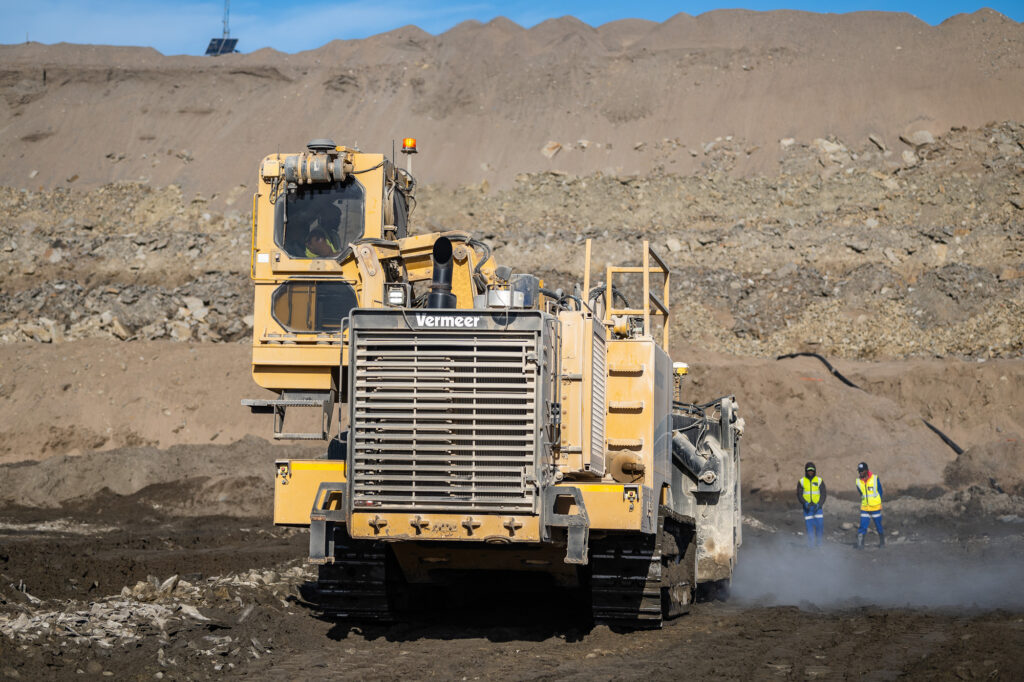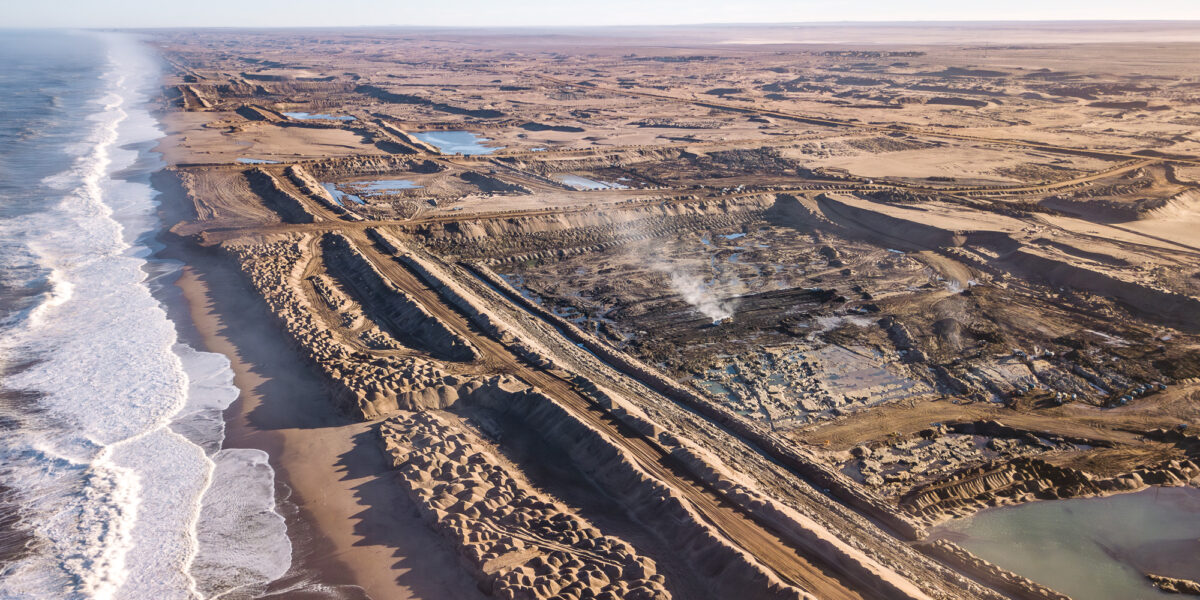Between the powerful waves of the Atlantic Ocean and the diamond-rich southern coast of Namibia, stands a massive man-made structure known as Namdeb’s Seawall, which stands at 7 to 10 metres tall. At Namdeb’s Southern Coastal Mines, the mining process begins with accreting beaches by depositing overburden sand to push the shoreline back to create minable areas. The seawalls are constructed on these newly created beaches. This impressive barrier enables continuous and uninterrupted coastal mining in all sea conditions.
Namdeb has spent years refining the design and purpose of the Seawall, ensuring that it is strong, and fit for the dynamic and often unpredictable environment in which it stands. The Seawall has over the years evolved from just a structure, into a system that depends on accurate data, smart planning, and constant monitoring.
Amongst the teams ensuring structural stability is Namdeb’s dedicated team of Surveyors, working tirelessly behind the scenes to keep this barrier functional, safe, and smart. Before any section of Seawall is built, Namdeb’s surveying team gets to work collecting detailed data along the shoreline, focusing on a key marker known as the +2 metre contour line; this helps indicate how much land has been successfully accreted and what space is safe to mine. In addition, bathymetric surveys are conducted to map the seafloor’s shape and slope beneath the water’s surface. This combined information is used to create a full coastal profile, extending from the deep sea to the shore.
These datasets are shared with external coastal engineers, who assess the risk and confirm whether the planned seawall section is safe to construct. Once approved, surveyors go back into the field, staking out construction boundaries, conducting regular spot checks, and verifying that the build matches the design.
The construction of the seawall is merely the beginning. The real challenge lies in making sure the structure can withstand the force of nature over time.

In 2018, Namdeb experienced a significant breach in part of its Seawall. A breach occurs when the protective barrier is compromised, allowing seawater to penetrate and cause flooding or structural damage to the mining area. This incident became a significant turning point for the company, prompting a thorough review of the Seawall design and fuelling more innovative solutions. In response, Namdeb implemented key design improvements, most notably setting the wall 20 metres further back from the high-water line and raising it by +2 metres in elevation. This strategic change ensures that incoming waves break further away from the wall itself, reducing direct impact and minimising the risk of erosion and future breaches.
True to Namdeb’s resilient spirit, this challenge became an opportunity for learning and innovation, strengthening their infrastructure and proving, once again, that the company emerges stronger and more prepared with every obstacle.
Despite its strength, the Seawall faces a constantly changing coastal environment, with storm surges that can at times be severe. Namdeb’s remote location also means that external support is limited. Over time, the company has developed in-house capabilities to maintain and service survey equipment, operate sea rescue vessels, and respond to emergencies without delay.
Aligned to the changing times, technology has evidently become an essential part of protecting the Seawall. Today, laser systems are used to track wave run-up even at night, measuring how far the whitewater reaches and how it compares to baseline data. This gives the team a real-time and a 24-hour picture of how the sea is behaving, especially during storms.
Supporting the laser system is a wave buoy anchored offshore, this technology continuously records wave height and frequency. Meanwhile, piezometers installed inside the wall measure the pressure building within its structure, this is key data for detecting stress before it becomes a problem. All of this information feeds into Namdeb’s storm preparedness strategy. Aligned to this strategy, Coastal Engineers provide updated weather forecasts, which are then compared to live data. If the numbers hit a certain threshold, pre-planned response actions are then triggered through what’s called a TARP (Trigger Action Response Plan).
At the heart of the Seawall’s defence are the people who protect it every day, namely the stripping, bedrock, dewatering, security, and load and haul teams, as well as the entire Namdeb operation. Safety is our utmost priority, and it begins with empowering our employees. Every individual working near the Seawall undergoes Geotechnical Hazard Awareness Training, equipping them with the knowledge to identify early warning signs, whether it’s a minor ground shift, a subtle surface crack, or unusual ground movement. By recognising and reporting these signs early, employees play a vital role in preventing incidents, ensuring quick and effective responses, and safeguarding both people and operations.
The Namdeb Seawall is more than just a static structure, it is a living system of engineering, innovation, and vigilance. It stands strong, enabling Namdeb to mine where land once didn’t exist, and to do so responsibly, in line with their commitment to Mining for Good. This means protecting their people, preserving the coastline, and ensuring that the benefits of mining extend far beyond the operation itself.


